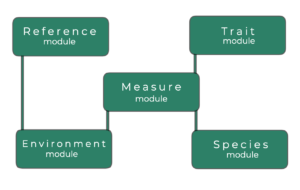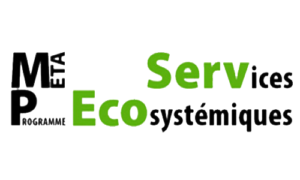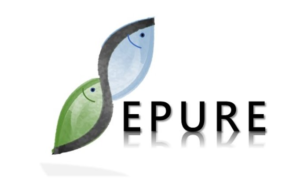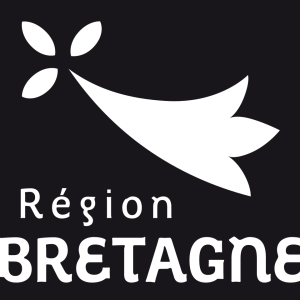ABOUT TOFF
TOFF (i.e. Traits OF Fish) focuses on functional traits of fish (hagfishes, lampreys, chimaeras, sharks and rays, lobe-finned fishes, and ray-finned fishes). It aims at bringing together behavioral, morphological, phenological, and physiological BMPP traits coupled to environmental measurement context into a single open-source access repository. The database can host various types of data from multiple sources of literature (i.e. peer-reviewed articles, theses, monographs, and books).
It has been designed to contain “records” that are information about BMPP traits for a fish species, at a specified developmental stage (i.e. larvae, juvenile, or adult), sex, and ploidy level in a characterized environment from a scientific source. TOFF is a flexible SQL relational database using entity – attribute – value model coupled with controlled vocabularies. These latter ones are semantic tools, which consist of a list of terms, their definitions, and some of their properties such as their unit, their range (e.g., from 0 to 14 for pH), their spelling into drop-down menu (e.g., for categorical variables), or their format. To get access to the TOFF thesaurus, please see doi.org/10.6084/m9.figshare.10253219.v4.

The relational database schema contains five core modules. First, the Reference module stores bibliographic metadata (e.g., authorship, publication type, publication year). Second, the Trait module integrates functional traits included in the database. These traits are grouped into four classes (i.e. behavioral, morphological, phenological, and physiological traits). Third, the Measure module includes each measure (i.e. attribute of a trait) of a particular trait. It is linked to the Trait module. The Measure module includes also information about the effective size (i.e. notifying on how many individuals is based the trait measure), the ploidy level (e.g., diploid or triploid fish), the development stage (i.e. larvae, juvenile, adult, or unknown), the sex (i.e. male, female, hermaphrodite, or unknown), the type of measure (i.e. direct measurement, computed values, or predicted through modeling approach), and the name of measure recorder (i.e. the data contributor for a particular measure) associated to each measure. Fourth, the Environment module displays information about the environment in which the measures have been recorded. The environmental features are classified into three classes: abiotic environments (e.g., geographic occurrence, water parameters), biotic environment (e.g., population density, environment species diversity), and information about feeding (e.g., ad libitum). Fifth, the Species module (i.e. providing a table with the valid names of fish species based on FishBase species database (www.fishbase.org). For further details about TOFF structure please see DOI: 10.1038/s41597-019-0307-z.
Thomas Lecocq is an associate professor (senior lecturer) in animal biology and ecology. He works on functional ecology, ecological niche modelling, systematics, and phylogeography. His current research projects focus on the development of integrative and conceptual approaches to support domestication programs. He explores how intraspecific diversity and interspecific interactions can facilitate domestication process and increase animal production sustainability.
Marielle Thomas is an associate professor (senior lecturer) in University of Lorraine. Her scientific expertise is in the field of animal biology, fish quality, functional ecology, and agroecology. She studies processes that structure fish communities in the farming environment (interspecific relationships, practices, and farming systems) for the development of more efficient and sustainable aquaculture systems.
Alain Pasquet is a senior scientist of the CNRS (National Centre for Scientific Research). His skills are in the field of animal behavior (interindividual relationships, personality, predatory behavior), behavioral ecology (variability of behavioral patterns relatively to environmental constraints, performances, fitness), and evolution. He developed researches on Invertebrates (Spiders) and Vertebrates (fish) species.
Alain Benard is an engineer at the institut national de recherche pour l’agriculture, l’alimentation et l’environnement (INRAE). He works on information systems and systems administrator as well as analysis, modeling, and development of database.
Jérémy Weber is a research technician in University of Lorraine. He works on databases, as well as software and web development.
- Marielle Thomas
- Alain Pasquet
- Thomas Lecocq
- Sarah Nahon
- Iris Lang
- Nellya Amoussou
- Jean-Gabriel Reynaud
TOFF is used in the following projects:
Aquaspecies – Fish farming in multispecies aquaculture: an opportunity to develop a more efficient aquaculture?
The Aquaspecies project (2016-2017; 3 partners) studies theorical and functional bases of fish assemblages in rearing systems by considering biodiversity both as an objective to be achieved and as a resource to be used. For this, the work has consisted to develop TOFF database.

ICHTYOSERV – ICHTYOdiversity, driving force behind the operation of re-circulating water rearing systems? Evaluation of Ecosystem SERVICES as a decision criterion
The objective of ICHTYOSERV project (2018-2020; 6 partners) aims at developing, using functional ecology approaches, a methodology for integrating ichthyodiversity into fish farming systems in order to increase their efficiency and sustainability.

SEPURE – New strategies for building and managing pond production systems for sustainable fish farming
SEPURE (2020-2023) is a research and development project with 6 partners that aims at defining sustainable pond production strategies to meet productivity and environmental objectives, based on biodiversity. It provides references and operational tools, based on trials carried out in experimental stations and directly by professionals.
PERCIPONIE – Development of perciculture in aquaponics
PERCIPONIE (2020-2022; 11 partners) is a technology transfer program that aims at disseminating a new technology for the coupled production of autotrophic (aromatic plants) and heterotrophic organisms (fish), with an optimal management of nutrient flows and the consideration of plant metabolites and fish welfare.

POLYRAS – Optimization of aquaculture production in RAS
POLYRAS (2024-2028) is a research and development project with 13 partners that aims to optimize local aquaculture production in Grande Région (Belgium, Germany, Lorraine) by using polyculture. This approach, usually applied to open extensive systems with low productivity, is applied here in an innovative intensive way, while respecting fish welfare.
OPTICED – Optimization of freshwater shrimp farming
The main objective of OPTICED (2024-2026) is to support the development in France of the freshwater shrimp, Macrobrachium rosenbergii, industry. More precisely, OPTICED must make it possible to support the transition/diversification of the pond fish farming sector through research actions aimed at optimizing yields and controlling the potential animal health and environmental risks of this breeding.



